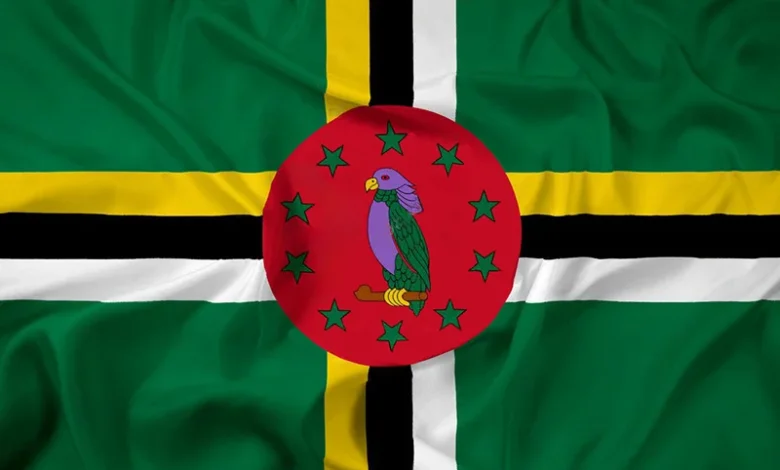National Flag of Dominica

The National Flag of Dominica was officially adopted on November 3, 1978, symbolizing the island’s journey to independence. Alwin Bully created a national symbol, the flag’s design, reflecting Dominica’s lush natural environment, cultural heritage, and national pride. It consists of a green field, representing the island’s rich forests, overlaid with a triple-coloured cross of yellow, black, and white stripes. These stripes form a cross at the centre, symbolizing Christianity and Dominica’s belief in the Trinity. Each colour of the stripes holds a specific meaning:
- Yellow represents sunshine and the island’s agricultural products, especially citrus and bananas. It also honours the indigenous people of Dominica.
- Black symbolizes the rich volcanic soil and the African heritage of the Dominica people.
- White represents the purity of the island’s rivers and the aspirations of its people.
The Central Emblem: Sisserou Parrot
At the centre of the cross is a red disk featuring the Sisserou Parrot (Amazona imperialism), Dominica’s national bird and one of three Endangered Birds on the island. This parrot also appears on Dominica’s Coat of Arms, symbolizing the country’s resilience and commitment to conservation. The bird is surrounded by ten lime green stars, representing the island’s ten parishes and signifying unity and equality among Dominica’s people.
Symbolism of the Colors and Design
The combination of colours and symbols on the National Flag embodies Dominica’s natural beauty, cultural diversity, and determination to thrive. The red disk symbolizes social justice, while the green background reflects the island’s vibrant vegetation and environmental richness. The flag powerfully represents Dominica’s cultural heritage, often celebrated during national events like Flag Day, which is part of National Emblems Week.




